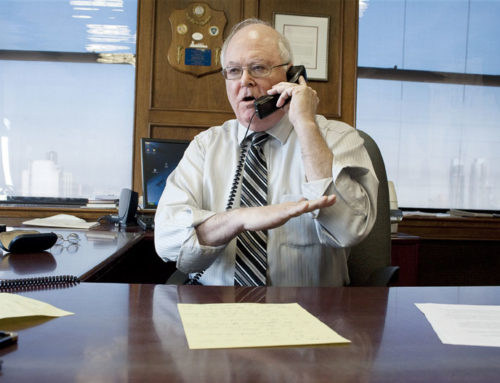Dinesh D’Souza
Life After Death: The Evidence By Dinesh D’Souza. Regnery Publishing, 2009. Order online at www.regnery.com or your favorite bookseller.
Many cultures and religions affirm life after death but only one asserts that someone actually died and returned to life. This claim is made exclusively by Christianity. No one says of Moses or Muhammad that after their deaths they were seen again in the flesh. So if the Christian claim is true, it shows not only the possibility of life after death but also legitimizes the specifically Christian understanding of the afterlife. So let’s for the purpose of argument treat the resurrection as an historical claim no different from any other historical claim.
Here are the four historical facts that have to be accounted for. First, Christ was tried by his enemies, convicted, and crucified to death. Second, shortly after his burial, Christ’s tomb was found to be empty. Third, many of the disciples, but also one or two skeptics, claimed to have seen Christ alive in the flesh, and interacted with him, following his death. Fourth, inspired by the belief in Christ’s bodily resurrection, the disciples initiated a movement that, despite persecutions and martyrdom, converted millions of people to a new way of life based on Christ’s example and his teachings. These facts are in the mainstream of modern historical scholarship. They are known with the same degree of reliability as other facts that are taken for granted about the ancient world: say the fact that Socrates taught in the marketplace of Athens, or the fact that Caesar crossed the Rubicon, or the fact that Alexander the Great won the battle of Gaugamela.
In history, we take the facts that we do know and we try to make sense of them. Historian N.T. Wright, in a mammoth study, argues that the hypothesis that Christ actually rose from the dead may sound intuitively implausible to many but it has great explanatory power. In other words, if it happened, it makes sense of all the other facts listed above. It would help us to understand why the tomb was empty, why the disciples thought they saw Christ after his death, and why this astounding realization motivated them to evangelism and strengthened them to face persecutions and martyrdom without renouncing their new convictions. Wright goes much further, though, suggesting not merely that resurrection is a sufficient hypothesis but also that it is a necessary one. What he means is that no alternative hypothesis can explain the given facts with anything approaching the same degree of plausibility. Since skeptics have been advancing alternative theories for two thousand years, this is quite a claim. So let’s briefly review some of those alternative theories.
Perhaps the most popular one, at least since the Enlightenment, is that the resurrection is a myth; the disciples made it up. “The myth of the resurrection,” writes Corliss Lamont in The Illusion of Immortality, “is just the kind of fable that might be expected to arise in a primitive, pre-scientific society like that of the ancient Hebrews.” The disciples expected that their leader would return, so they concocted the story that they saw him alive after his death.
While this is the view perhaps most widely held by skeptics today, it is actually the weakest attempt to make sense of the facts. First, as Wright shows, the idea that dead people don’t come back to life is not an Enlightenment discovery. The ancient Hebrews knew that as well as we do. Second, Christ’s Jewish followers did not expect him to return to life. Jews believed in bodily resurrection but not until the end of the world. The disciples were utterly amazed when they saw Christ in the flesh, and some refused at first to believe it. Third, it is one thing to make up a story and another thing to be willing to endure persecution unto death for it. Why would the disciples be ready to die for something they knew to be a lie?
A second theory is that the disciples stole the body. This theory is a very old one; in fact, it was advanced by Christ’s Jewish opponents to account for the empty tomb. Jewish polemics against Christianity for two centuries continued to emphasize this theme. The theory, however, has several obstacles. Christ’s tomb was barred by a stone and guarded by Roman soldiers. How could the disciples have gotten by the guards? Moreover, if the disciples stole the body, they would know for a fact that Christ wasn’t raised from the dead. We come back to the problem with the previous theory: why would the disciples’ mourning turn to gladness? Why would they embark on a worldwide campaign of conversion? Why would they refuse to recant their beliefs on pain of death?
What really requires explanation here is not how the disciples stole the body but why Christ’s critics would so tenaciously advance such an implausible explanation. The answer seems obvious: they had to account for the fact that the tomb was empty. The empty tomb is significant because we know that Christ’s followers were proclaiming his resurrection in Jerusalem almost immediately following his death. If they were simply making this up, it would be easy to disprove their claims by producing Christ’s corpse. This didn’t happen, and the obvious explanation is that neither the Jews nor the Romans could do this.
A third theory holds that Christ didn’t really die but was merely in a swoon or trance. In the tomb he revived, made his getaway, and then showed up before the disciples. There are two main problems with this theory. For starters, it presumes that Roman soldiers didn’t know how to kill people. Typically crucifixion is death by asphyxiation, and if Roman soldiers weren’t sure the victim was dead they would break his legs. Christ’s legs were not broken, evidently because the soldiers were convinced he was dead. So the idea of Christ reviving in the tomb is far-fetched.
But even if he did, he would have been barely conscious, at the point of death. Imagine a man in this condition rolling back the stone, eluding the guards, and then presenting himself to his followers. Their expected reaction would be, get this man to a doctor! But this is not what happened. The disciples, disconsolate over Christ’s death, did not claim to experience a wounded man in a swoon; they claimed to see a man who had triumphed over death and was fully returned to life and health. Because of its complete incongruity with the historical evidence, even historian David Strauss, a noted skeptic about the resurrection, rejected the swoon theory.
Finally there is the hypothesis of the hallucinating disciples. We find this view defended in Gerd Ludemann’s The Resurrection of Jesus and also in the work of John Dominic Crossan, Marcus Borg and the Jesus Seminar. Ludemann says that in the same manner that today people claim to have “visions” of the Virgin Mary, the disciples then had “visions” of a Christ returned from the dead. According to Ludemann, these visions proved contagious and “led to more visions” and eventually just about everyone was reporting Jesus sightings. The hallucination theory has gained credibility in recent years with the emergence of a substantial number of people who claim to have seen UFOs, or Elvis returned to life.
But the great problem with the hallucination hypothesis is that hallucinations are almost always private. Except in very rare cases, more than one person does not have the same hallucination. If ten people report seeing something very unlikely, it is not convincing to say they are simply dreaming or imagining things, because you then have to account for why they are all having the same dream or imagining the same thing. Historian Gary Habermas asks us to envision a group of people whose ship has sunk and who are floating around the sea in a raft. Suddenly one man points to the horizon and says, “I see a ship.” Sure, he may be hallucinating, but then no one else is going to see the same ship. Now if the others on the raft also see it, forget about the hallucination theory, it’s time to start yelling for help because there really is a ship out there.
Apply this reasoning to Elvis sightings and it’s obvious that if several normal people say they saw Elvis in Las Vegas, they most likely didn’t make it up. Probably they saw one of the many Elvis impersonators who regularly perform in night clubs and casinos. In the same way, when people report witnessing a UFO they are almost certainly not hallucinating; rather, they did see something in the sky but didn’t know what it was. The problem in most cases isn’t hallucination but misidentification.
Now Christ is reported to have appeared many times to the disciples. Paul notes that on one occasion he appeared to more than 500 people. Many of these people were reportedly alive and in a position to dispute the veracity of Paul’s account. James, who was a skeptic about Christ’s ministry, reportedly became convinced Christ was the messiah only after seeing his resurrected body; so too the apostle Thomas, the famous doubter, was convinced of the resurrection only after he touched the wounds of Jesus. Paul himself was by his own account a persecutor of Christians until Christ appeared to him on the road to Damascus. Never in history have so many diverse individuals, from different backgrounds and on different occasions, reported the same hallucination. Nor can hallucinations account for the empty tomb, or for why the Jews and Romans could settle the whole controversy by producing Jesus’ body.
The remarkable conclusion is that for all their veneer of sophistication, none of the alternative theories provides a remotely satisfactory account of the historical data before us. The resurrection hypothesis, however fanciful it appears at the outset, turns out upon examination to provide the best available explanation. There is no attempt here to definitely prove the resurrection. One of the most striking discoveries of historical research is how little we know for certain about the past. What I am trying to show is that the resurrection cannot be cavalierly dismissed as religious myth. Rather, based on scholarly standards uniformly applied, the resurrection survives scrutiny and deserves to be regarded as an historical event.
Dinesh D’Souza is a Fellow at the Hoover Institution at Stanford University and an author of many books. He serves on the board of advisors of the Catholic League.






